Trek to the Stars With October's Most Compelling Spaceflight Images
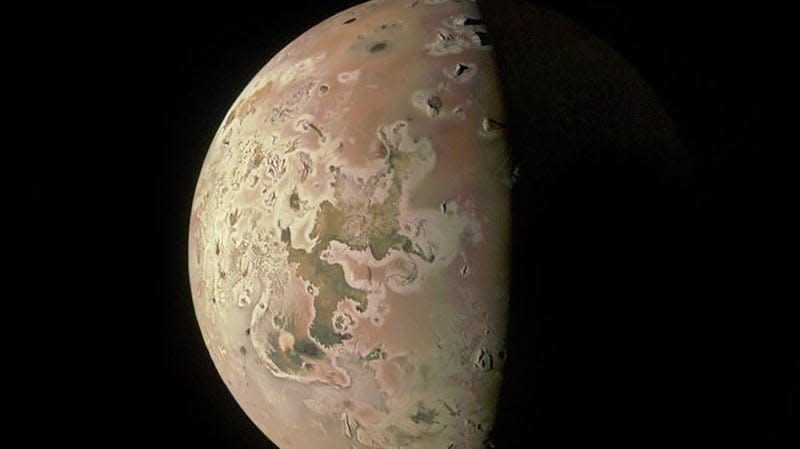
Jupiter’s Moon Io, as imaged by NASA’s Juno spacecraft.
From capturing precious asteroid samples and exploring volcanic moons to navigating mysterious toxic blobs and portraying fictional Space Force battles, October was a captivating month in spaceflight and space exploration, as these images attest.
Canadian author L.M. Montgomery once wrote, “I’m so glad I live in a world where there are Octobers.” Indeed, it is the finest month, made even better this year by a host of exciting developments in the world of spaceflight.
Read more
Metal Gear Solid Actor Weighs In On Controversial 'Revealing Costume'
Video Shows Tesla Cybertruck Appearing To Struggle With Some Light Off-Roading
There's Finally A New Silent Hill Game And Fans Already Hate It
NASA shared exciting images from the OSIRIS-REx asteroid sample return mission. The canister, now in the hands of technicians, is still in the process of being opened (the space agency is struggling to open the container—yikes), but a plethora of asteroid material on the exterior surface is keeping them busy; the interior contents can wait while these “bonus” materials are extracted and preserved.
Initial studies of the 4.5-billion-year-old space rock, which OSIRIS-REx collected and brought back to Earth, reveal traces of high-carbon content and water. This combo might just be a hint that the building blocks of life on Earth could be packed inside of asteroids. This is the first peek at the asteroid material since it landed in September, and the findings come from an early analysis by the science team from NASA’s OSIRIS-REx mission.
Vintage boosters on the move
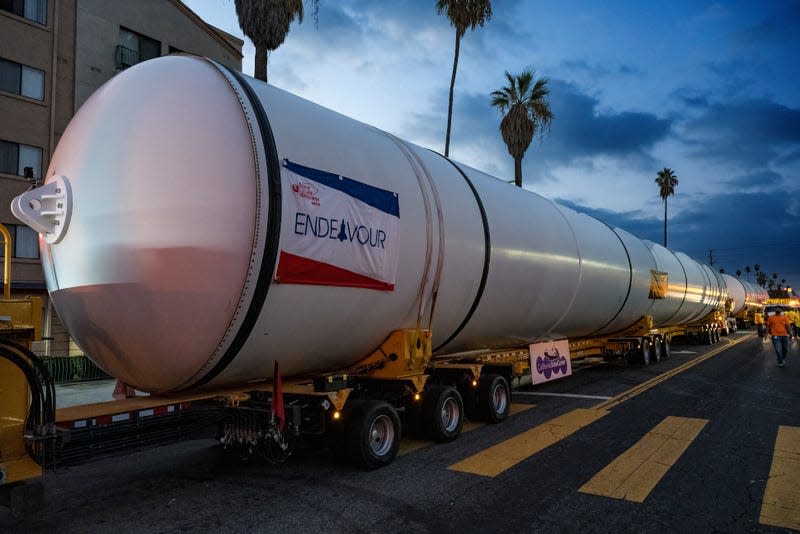
On Wednesday, October 11, crowds gathered along Los Angeles streets to witness two massive solid rocket boosters roll in, marking a big step in the “Go for Stack” project—an initiative from the California Science Center to feature the Endeavour as the first and only “ready-to-launch” Space Shuttle stack. When complete, the two boosters, external tank, and orbiter will stand 20-stories tall.
Juno’s view of Io
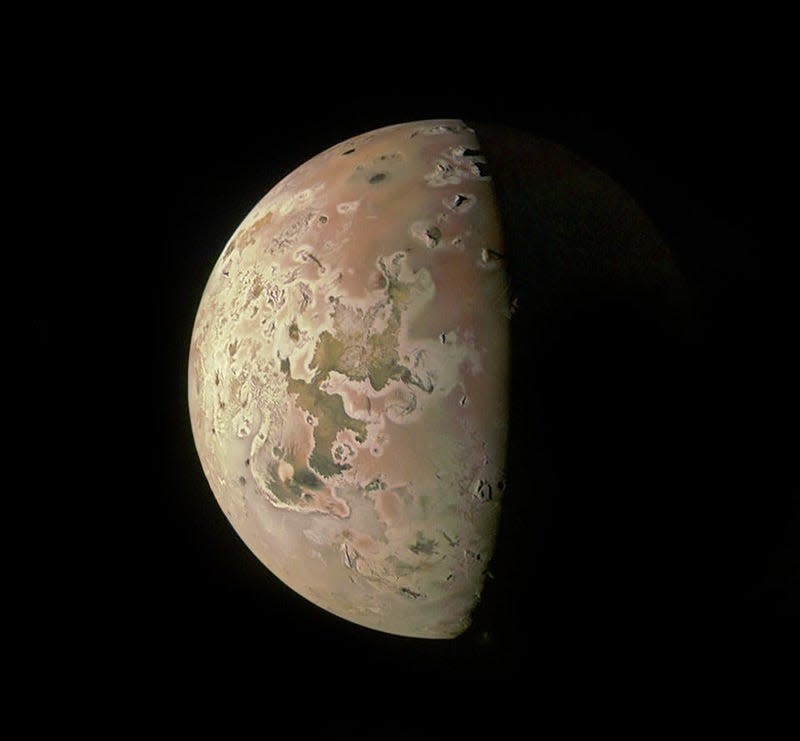
The Juno spacecraft, after years of studying Jupiter, recently imaged its moon Io during a flyby on October 15. NASA unveiled these images, showcasing the most volcanically active world in the solar system with a surface scarred by hundreds of volcanoes and molten lava lakes. These images, available to the public on the mission’s website, are often enhanced by data visualization artists, like the one above processed by Ted Stryk, offering a vivid glimpse of Io’s tumultuous past.
Amazon’s Kuiper reaches orbit
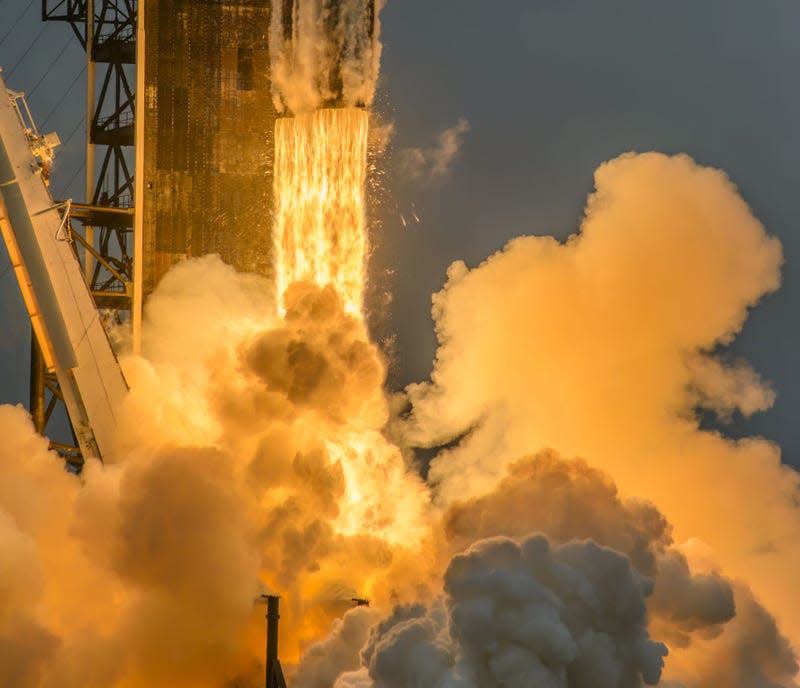
On October 6, United Launch Alliance successfully deployed Amazon’s KuiperSat-1 and KuiperSat-2 using an Atlas V rocket. These prototype satellites are the first of very of many, as Amazon seeks to build a megaconstellation to rival SpaceX’s Starlink.
The SpaceX boosters have landed
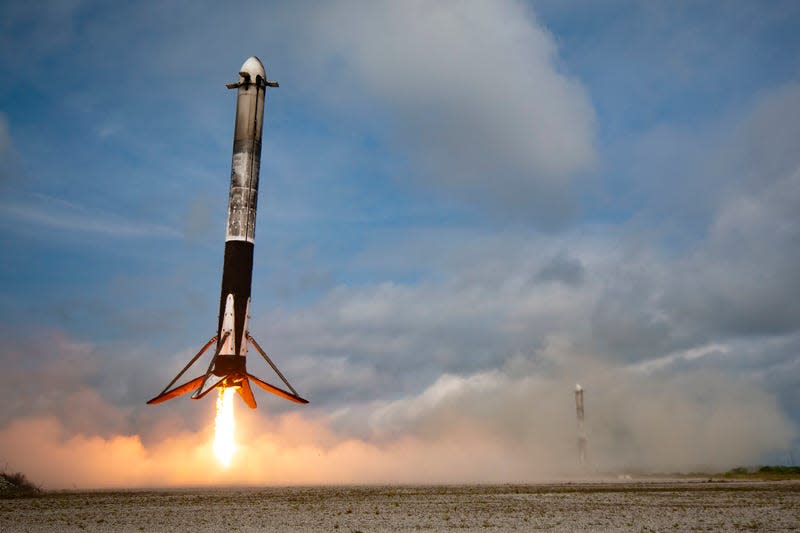
On October 13, minutes after NASA’s Psyche launch from Kennedy Space Center, a side booster, one of two from SpaceX’s Falcon Heavy rocket, performed a successful landing at Cape Canaveral Space Force Station in Florida. The mission aims to explore the metal-rich asteroid Psyche, situated between Mars and Jupiter. This marks NASA’s inaugural mission to the asteroid, which is predominantly composed of metal rather than rock or ice.
Ariane 6 gets a wet dress
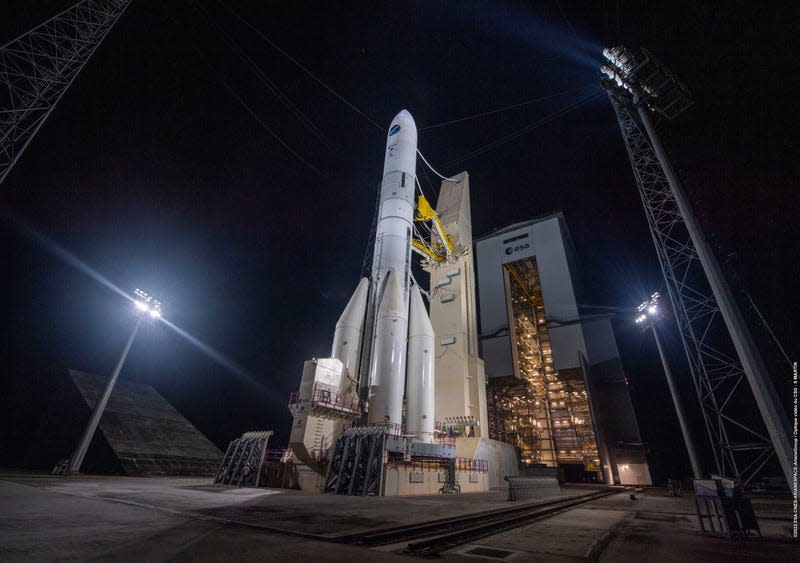
On October 24, at Europe’s Spaceport in Kourou, French Guiana, a full-scale wet dress rehearsal for the Ariane 6 rocket was carried out by a joint team from CNES, ESA, Arianespace, and ArianeGroup. The rehearsal, which lasted over 30 hours, involved fueling and draining the rocket. This marked the third full launch countdown rehearsal for Ariane 6, conducted at night to assess operations in cooler conditions. A significant eight-minute engine firing test for Ariane 6 is anticipated by November’s end, leading up to its maiden launch expected early next year.
Space Force’s pretend space battle
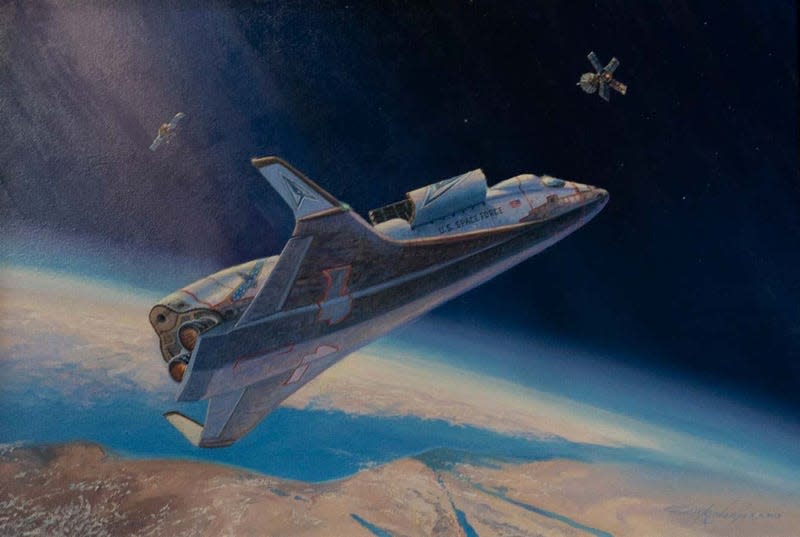
Space Force unveiled its first official painting in October, which left us scratching our heads. The artwork, crafted by aviation and aerospace defense artist Rick Herter, depicts a Boeing X-20 Dyna-Soar—a 1950s era concept that never took off. The painting depicts the spaceplane intercepting an adversary satellite to stop it from disabling a friendly satellite. Space Force opted for the fictional, retrofuturistic painting due to the “highly classified nature of many space operations.”
Toxic blob
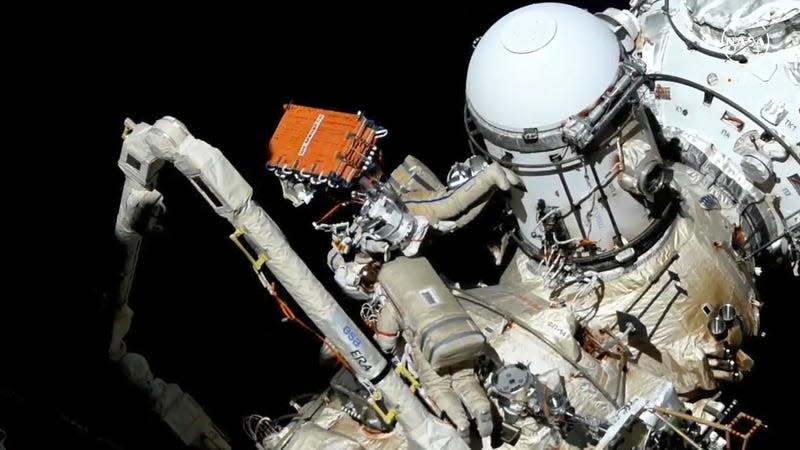
During a spacewalk on October 25, Russian cosmonauts Oleg Kononenko and Nikolai Chub were inspecting the source of a leak on the Nauka laboratory module’s backup radiator on the International Space Station (ISS) when coolant unexpectedly spewed out. Mission controllers promptly instructed the cosmonauts to evacuate the area for safety reasons. Although the coolant didn’t contaminate their suits, the duo carefully wiped down their equipment before reentering the ISS.
Jupiter’s spooky face
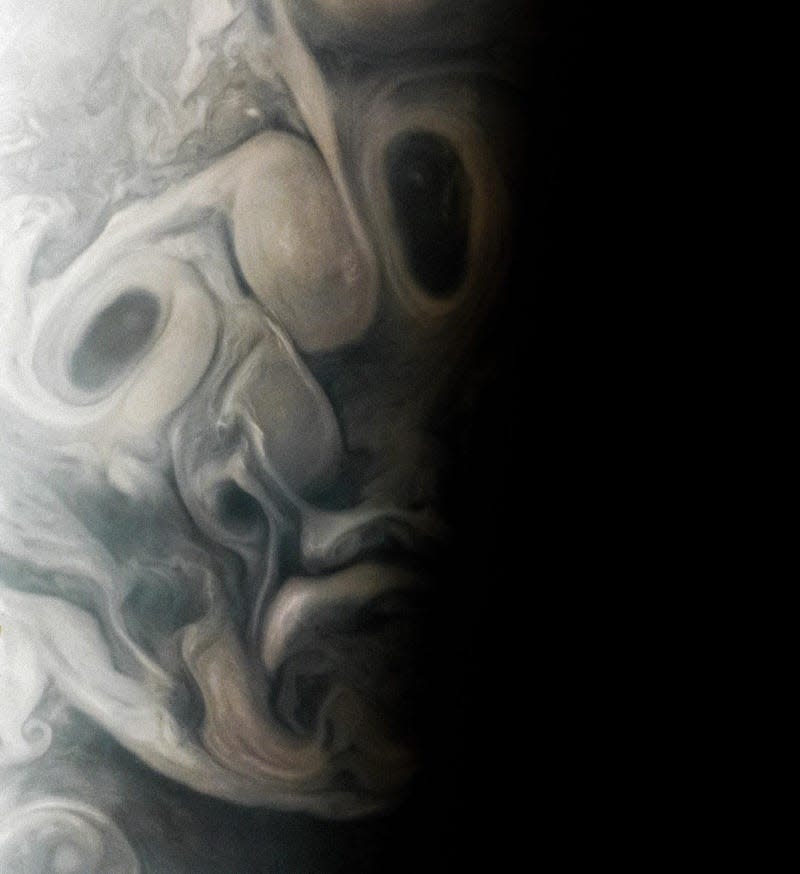
NASA’s Juno spacecraft, during its 54th close encounter with Jupiter, captured a ghostly image of Jet N7 in the gas giant’s far northern regions, highlighting turbulent clouds and storms along the terminator (the dividing line between the planet’s day and night sides). The cloud patterns in this image are a great example of pareidolia, in which our brains trick us into seeing familiar shapes like faces in random places. Citizen scientist Vladimir Tarasov processed this image using raw data from JunoCam, when Juno was approximately 4,800 miles (7,725 kilometers) above the cloud tops.
Four engines for a big rocket
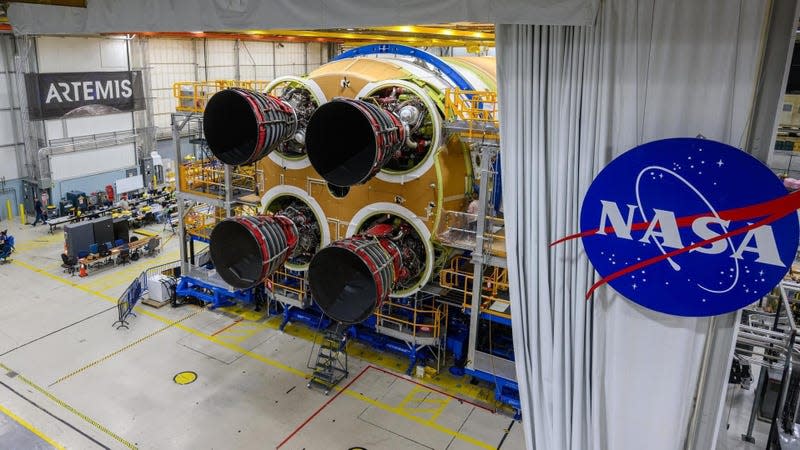
NASA’s Artemis program, with its goal to return astronauts to the Moon for the first time since the Apollo missions, is making significant progress. The mounting of all four RS-25 core stage engines onto Core Stage-2 (intended for Artemis 2) signifies an important achievement, as the space agency constructs its second Space Launch System (SLS) rocket.
A deluge at Kennedy
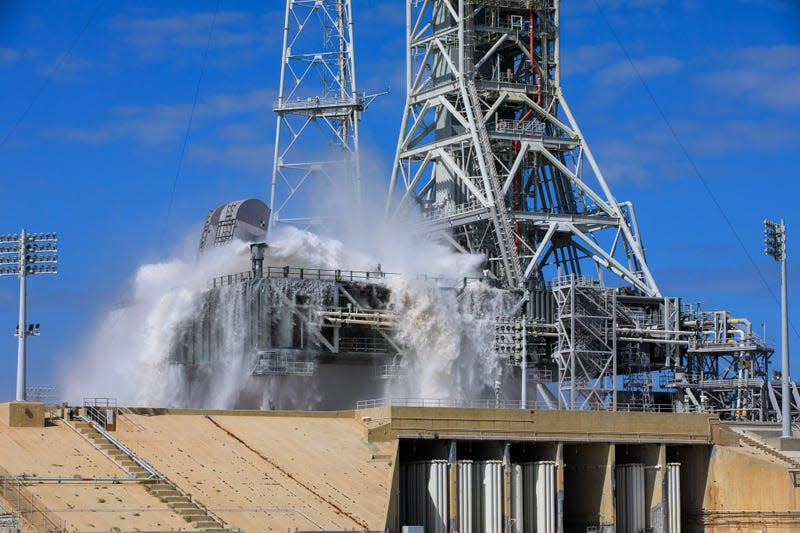
On October 24, at Kennedy Space Center’s Launch Complex 39B in Florida, NASA’s Exploration Ground Systems performed a water flow test with the mobile launcher. This was the third test aimed at confirming the readiness of the overpressure protection and sound suppression system for the Artemis 2 mission launch. At liftoff, a massive 400,000 gallons of water will be released onto the pad to shield the SLS rocket, Orion spacecraft, mobile launcher, and launch pad from excessive pressure and the intense noise of ignition.
Record hatchlings at Kennedy
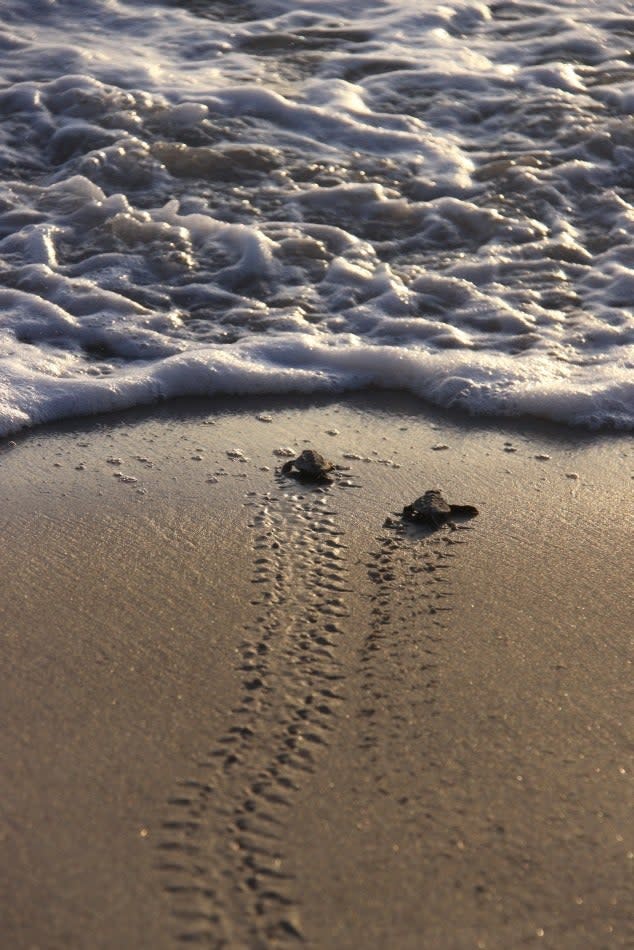
This year, NASA’s Kennedy Space Center in Florida wasn’t just a launchpad for rockets—it also witnessed a record-breaking 13,935 sea turtle nests, 639 more than the previous year and the highest since 1984. These nests, located on the center’s undisturbed beaches, belong to species recognized as endangered or threatened, such as the green (Chelonia mydas) and loggerhead (Caretta caretta) turtles.
For more spaceflight in your life, follow us on X and bookmark Gizmodo’s dedicated Spaceflight page.
More from Gizmodo
Budget Charges Driver $500 For Returning His Rental A Day Early
The Year's Most Elaborate—and Confounding—Celebrity Halloween Costumes
Sign up for Gizmodo's Newsletter. For the latest news, Facebook, Twitter and Instagram.

